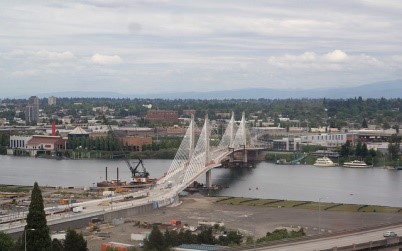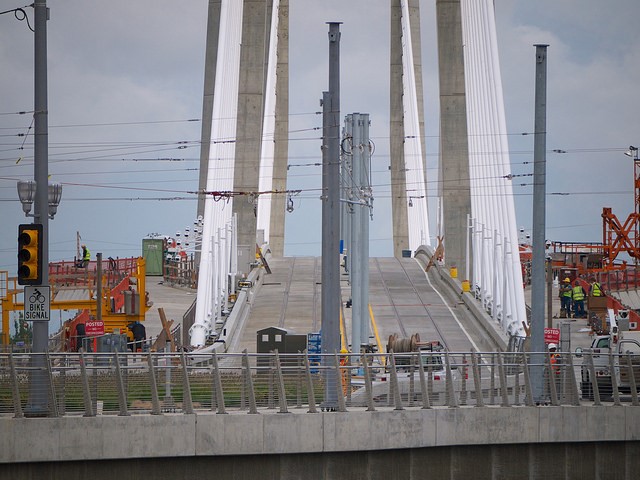
Bridges for People Instead of Cars
When most engineers design bridges, they have heavy traffic loads and vehicular congestion on their minds. However, not all bridges are designed for cars and trucks. And in fact, some bridges strictly prohibit personal motor vehicles from using them at all.
The city of Portland, Oregon has been a long-standing leader in efficient transportation for cyclists and pedestrians. Portland is also known for its world-class bridges, including America’s oldest operating vertical-lift drawbridge and the world’s second-longest tied-arch span bridge. So it should come as no surprise that Portland’s new bridge, Tilikum Crossing, is pretty innovative as well.
Portland’s New Bridge

Also known as the Bridge of the People, Tilikum Crossing extends over the Willamette River and is part of the Portland-Milwaukie Light Rail Transit Project. Buses, light rail trains, cyclists, pedestrians, and streetcars will be permitted to use the bridge when it opens in September 2015, but personal motor vehicles aren’t allowed. Emergency responders will be allowed to drive on the bridge when necessary in emergency situations.
Tilikum Crossing Design

The new Tilikum Crossing bridge has a cable-stayed design with two piers on land and two piers in the Willamette River. Cables are strung to support the bridge deck, which is thinner than some other bridge types. Engineers used this type of design because it is efficient in extending long distances without increasing the number of piers in the water.
The bridge spans 1,720 feet in length, and the towers reach 180 feet high. Approximately 3.5 miles of cables are being used for the bridge. The bridge was designed for maximum vertical clearance for boat traffic to pass through below the bridge. When completed, there will be two 14-foot wide bicycle and pedestrian paths on Tilikum Crossing. There will be three bus routes that use the bridge, and the city plans to expand its streetcar line on the bridge in the future as well.
Why a New Bridge is Necessary
Portland is one of the most bike friendly cities in America and almost 19,000 cyclists commute via bike on the average weekday. The number of bike commuters is growing by the year, and rail commutes are increasingly popular as well. Mary Fetsch, a Portland public transit spokeswoman, commented that the new light rail project should trigger a 20 percent jump in transit use in the new service corridor and a reduction of about 9,100 trips per week by private vehicles.
Tilikum roughly translates to “people, tribe, friends, and relatives” in Chinook Wawa, a tribal language used by native Oregonians and early explorers. Not only does this new bridge promise to be friendly to various forms of transportation, but also to the environment too. In fact, bridge construction was even planned around the migratory pattern of the Willamette’s salmon population. To check on the bridge’s construction progress, head over to the Trimet website and check out the live footage bridge cams!
Photo credit: DearEdward, Travis Estell via Flickr



